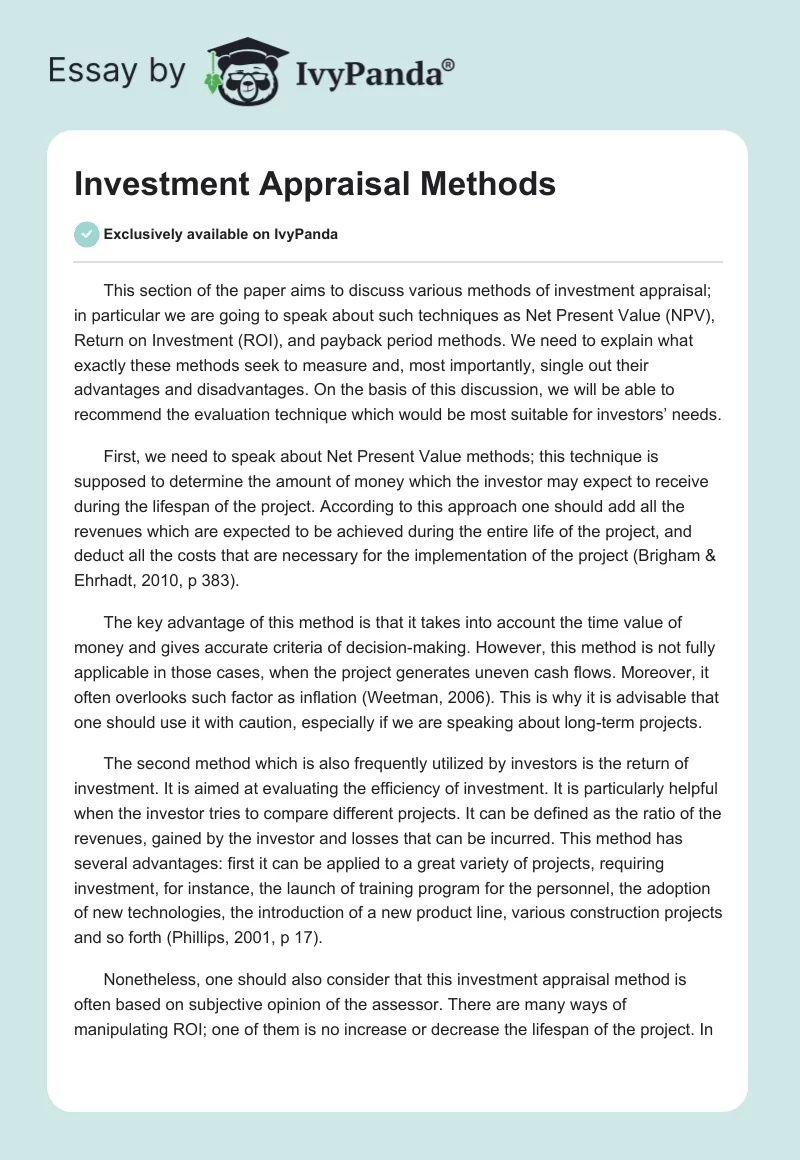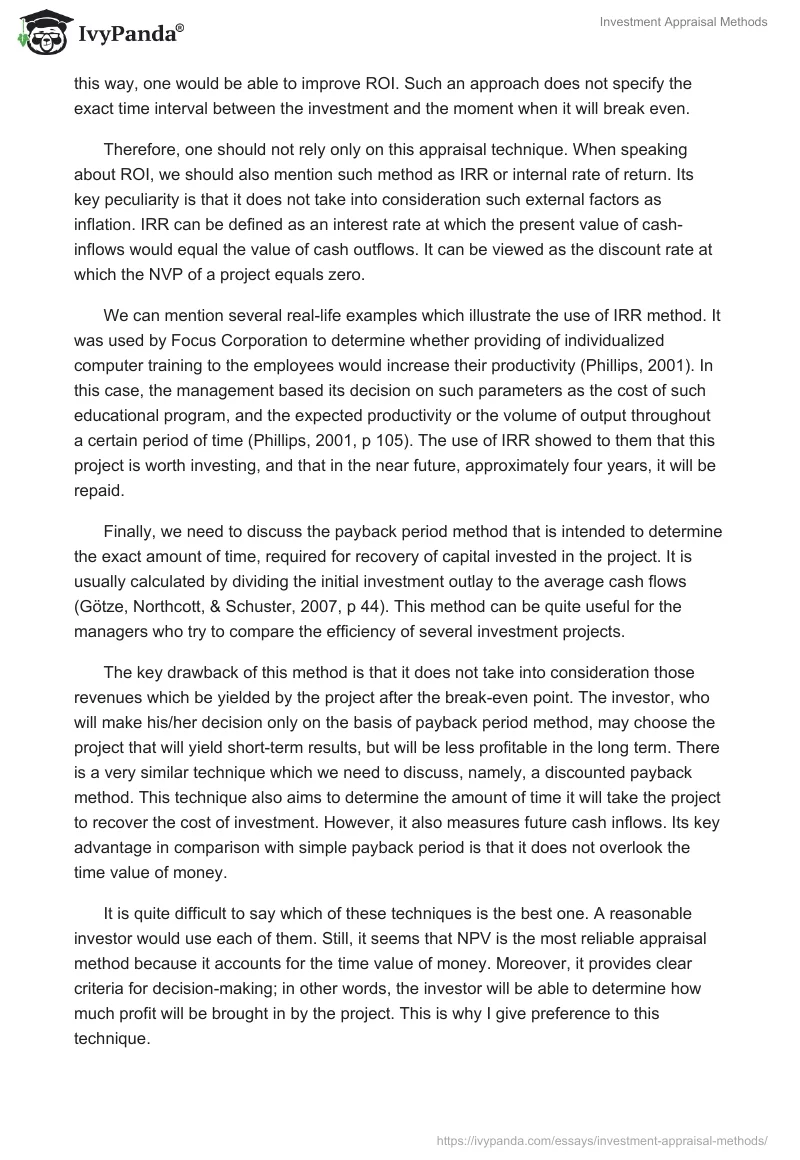This section of the paper aims to discuss various methods of investment appraisal; in particular we are going to speak about such techniques as Net Present Value (NPV), Return on Investment (ROI), and payback period methods. We need to explain what exactly these methods seek to measure and, most importantly, single out their advantages and disadvantages. On the basis of this discussion, we will be able to recommend the evaluation technique which would be most suitable for investors’ needs.
First, we need to speak about Net Present Value methods; this technique is supposed to determine the amount of money which the investor may expect to receive during the lifespan of the project. According to this approach one should add all the revenues which are expected to be achieved during the entire life of the project, and deduct all the costs that are necessary for the implementation of the project (Brigham & Ehrhadt, 2010, p 383).
The key advantage of this method is that it takes into account the time value of money and gives accurate criteria of decision-making. However, this method is not fully applicable in those cases, when the project generates uneven cash flows. Moreover, it often overlooks such factor as inflation (Weetman, 2006). This is why it is advisable that one should use it with caution, especially if we are speaking about long-term projects.
The second method which is also frequently utilized by investors is the return of investment. It is aimed at evaluating the efficiency of investment. It is particularly helpful when the investor tries to compare different projects. It can be defined as the ratio of the revenues, gained by the investor and losses that can be incurred. This method has several advantages: first it can be applied to a great variety of projects, requiring investment, for instance, the launch of training program for the personnel, the adoption of new technologies, the introduction of a new product line, various construction projects and so forth (Phillips, 2001, p 17).
Nonetheless, one should also consider that this investment appraisal method is often based on subjective opinion of the assessor. There are many ways of manipulating ROI; one of them is no increase or decrease the lifespan of the project. In this way, one would be able to improve ROI. Such an approach does not specify the exact time interval between the investment and the moment when it will break even.
Therefore, one should not rely only on this appraisal technique. When speaking about ROI, we should also mention such method as IRR or internal rate of return. Its key peculiarity is that it does not take into consideration such external factors as inflation. IRR can be defined as an interest rate at which the present value of cash-inflows would equal the value of cash outflows. It can be viewed as the discount rate at which the NVP of a project equals zero.
We can mention several real-life examples which illustrate the use of IRR method. It was used by Focus Corporation to determine whether providing of individualized computer training to the employees would increase their productivity (Phillips, 2001). In this case, the management based its decision on such parameters as the cost of such educational program, and the expected productivity or the volume of output throughout a certain period of time (Phillips, 2001, p 105). The use of IRR showed to them that this project is worth investing, and that in the near future, approximately four years, it will be repaid.
Finally, we need to discuss the payback period method that is intended to determine the exact amount of time, required for recovery of capital invested in the project. It is usually calculated by dividing the initial investment outlay to the average cash flows (Götze, Northcott, & Schuster, 2007, p 44). This method can be quite useful for the managers who try to compare the efficiency of several investment projects.
The key drawback of this method is that it does not take into consideration those revenues which be yielded by the project after the break-even point. The investor, who will make his/her decision only on the basis of payback period method, may choose the project that will yield short-term results, but will be less profitable in the long term. There is a very similar technique which we need to discuss, namely, a discounted payback method. This technique also aims to determine the amount of time it will take the project to recover the cost of investment. However, it also measures future cash inflows. Its key advantage in comparison with simple payback period is that it does not overlook the time value of money.
It is quite difficult to say which of these techniques is the best one. A reasonable investor would use each of them. Still, it seems that NPV is the most reliable appraisal method because it accounts for the time value of money. Moreover, it provides clear criteria for decision-making; in other words, the investor will be able to determine how much profit will be brought in by the project. This is why I give preference to this technique.
Reference List
Brigham E. & Ehrhardt M (2010). Financial Management: Theory and Practice. NY: Cengage Learning.
Götze. U. Northcott D. & Schuster P. (2007). Investment Appraisal: Methods and Models. Cambridge: Springer.
Phillips J. (2001). Measuring return on investment. NY: American Society for Training and Development.
Weetman. P. (2006) Management accounting. NJ: Pearson Education.


